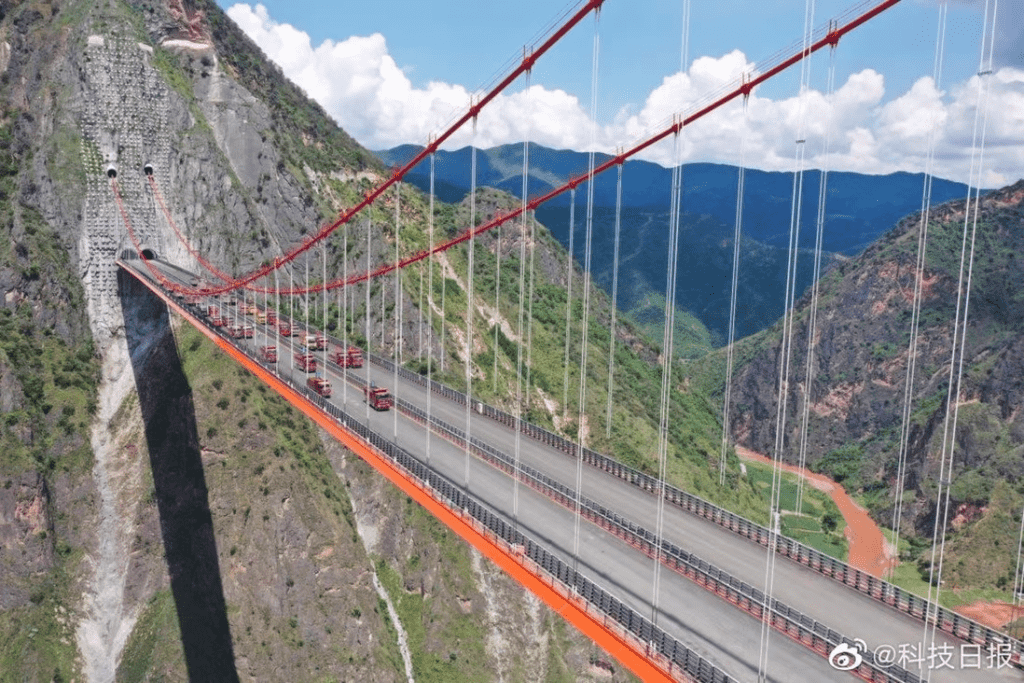With the opening of the first single-tower, single-span suspension bridge in the history of the world scheduled for next month, travel in China’s picturesque Yunnan region is about to become more accessible and exciting.
Lvzhijiang Bridge, which spans a river valley for 798 metres, is not very long compared to some of the other longest bridges in the world. However, the project’s complexity has led to praise for being an architectural masterpiece.

The bridge extends from tunnels that emerge from rocky mountain faces on either side of the valley’s Lvzhijiang, also known as the “Green Juice River.” It is the world’s first single-tower, single-span suspension bridge; it was constructed in a rocky V-shaped valley. It is supported at both ends by cables. Because there are no more columns, it has a usual yet startling appearance.
The single span of the bridge is 780 metres long. According to officials, it boasts the steepest tunnel anchorage in the world, which is tilted at 54 degrees.
The 156-meter tower, the bridge approach slab on one end of the structure, and the tunnel anchoring on the other are all built upon steep slopes because of the rocky terrain.
The project manager stated that “the complexity of this project is rarely seen in China” and that “the height difference between the bridge deck and the assembly yard is 320 metres high, or nearly 100 stories high.”
The bridge will significantly reduce travel time between Chuxiong Yi Autonomous Prefecture in Yunnan and Yuxi City. Despite not being well-known tourist sites, Yuxi City and Chuxiong are situated in the centre of Yunnan Province, halfway between the towns of Kunming and Dali.

A crucial portion of the 9,000-kilometer Yunnan Highway network and the 190-kilometer Yuchu Expressway may be found at the Lvzhijiang Bridge.
The Yuchu Expressway connects Yunnan to other significant national expressways, including the Hangzhou-Ruili Expressway and the Guangzhou-Kunming Expressway, which go through a city in western Yunnan that borders Myanmar.

The project’s construction started in 2019 and was completed in three years. It is predicted that traffic will begin by the end of April 2022.


